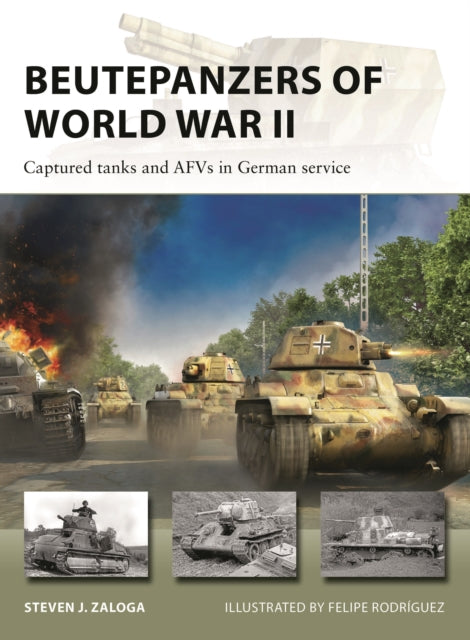Beutepanzers of WW2
Usually shipped within 24 hours
UK deliveries from £5.95
Delivery & Returns
Delivery & Returns
We use the Royal Mail, DHL Express or UPS for our customers. For UK addresses, deliveries under 10kg are a standard £4.95 via Royal Mail Tracked 48 Service. For orders over 10kg and overseas customers, postage is calculated for you at checkout once you have entered your postal address. This price, does not include any potential custom charges that may apply, depending on the product or destination, as every country has very different import duties / taxes. Online exclusive products (such as trainers) will be delivered to you directly from the printer, separate from other items in your order, but your postage fee covers ALL items in your order.
If you are unhappy with your purchase, please email shop@tankmuseum.org within fourteen (14) working days of receiving your goods, and return it to us at the address below, in its original condition, unopened (with any seals and shrink-wrap intact) and we will issue you a full refund or replace it. Goods must be returned at your own cost. If the item is faulty, you do not need to return it, we will send you a replacement free of charge.
Description
Description
Captured tanks and AFVs in German service
By Steven J. Zaloga
Paperback
Illustrated with original artwork and archive photos, this is the history of Germany's extensive use of captured tanks in World War II.
In this book Steven J. Zaloga, one of the world's leading armor authorities, uncovers the history of one of the least-known aspects of Germany's World War II Panzers: the extensive use of captured armored vehicles, “Beutepanzer.” The best came from the fall of France, and the Somua S 35 and Panhard 178 proved popular in German service.
Others, such as the antique Renault FT, were used for secondary tasks such as anti-partisan missions and airfield protection. Most curious of all were the “Becker conversions,” a private venture of a German artillery officer with family industry, who mechanized his unit’s towed artillery and went on to oversee the modernization and upgunning of many French Beutepanzers. These would play a particularly important role in Normandy in 1944.
Although the Wehrmacht captured large numbers of Soviet tanks, these saw very limited service, and most were sent to the smelters. When Italy switched sides in September 1943, the Italian AFV industry continued producing tanks and AFVs for the Wehrmacht, while tanks and AFVs captured from other Allied armies including Britain and the US were generally used on a small, improvised scale. Illustrated with superb new profiles and some rare archive photos, this is a concise guide to an intriguing element of World War II armour.
![Beutepanzers of WW2 Book [variant_option4]](http://tankmuseumshop.org/cdn/shop/files/9781472859389.jpg?v=1726831087&width=1214)

![Beutepanzers of WW2 Book [variant_option4]](http://tankmuseumshop.org/cdn/shop/files/9781472859389.jpg?v=1726831087&width=88)
![Christmas Tank Museum Wrapping Paper - Two sheet pack Wrapping Paper [variant_option4]](http://tankmuseumshop.org/cdn/shop/files/DSC2318.jpg?v=1759225755&width=176)
![Beutepanzers of WW2 Book [variant_option4]](http://tankmuseumshop.org/cdn/shop/files/9781472859389.jpg?v=1726831087&width=640)



